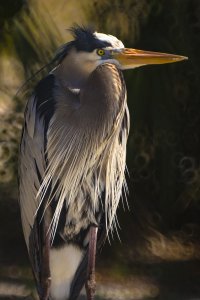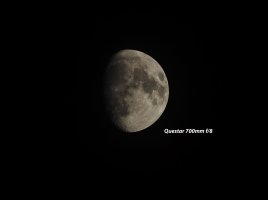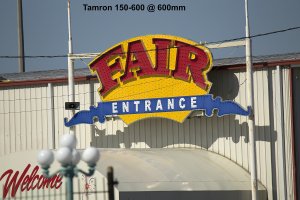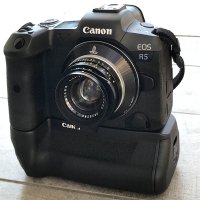You are using an out of date browser. It may not display this or other websites correctly.
You should upgrade or use an alternative browser.
You should upgrade or use an alternative browser.
Patent: Is Canon planning to release catadioptric (mirror) super telephoto lenses?
- Thread starter Canon Rumors
- Start date
We fill doughnuts with jam.Hmmm.. strange. First thought was a standard lens, but on seeing it was a mirror, disappointing. Useful for astro, focal lengths tend to be 1m or more. But IS? Long astro lenses will be mounted on heavy duty trackers which don't need it. And mmmm... donuts!
Not unless Topaz can come up with an AI donut filler?
Upvote
0
While most of my experience with catadioptric lenses comes from astrophotography with Schmidt Cassegrain telescopes, I have over the years had a couple of these lenses to play with for conventional photography. They ranged from a cheap 500mm POS to the very nice Questar 700, which did well after disassembly and cleaning. Here are some comparison shots with the Q700 and a Tamron 150-600. These lenses have their uses and I would welcome the addition of IS and AF. They'll never satisfy perfectionists and are horrible with specular highlights, but are an economical way to achieve long reach.
Attachments
Upvote
0
1200mm and up puts you in amateur telescope ranges that are useful. Lens IS coupled with sensor IBIS allows in camera/lens tracking due to earth rotation. The stabilizing would allow for longer exposures where you could track and stack images to get higher resolution shots of stars and objects.Do astro photographers shoot with 400-800mm focal lengths? My impression is they either go wide to catch a big slice of the sky, or long to, say, have the moon fill the frame.
How much would IS help for astro, when the lens is mounted on a sturdy tripod anyway?
Upvote
0
Do astro photographers shoot with 400-800mm focal lengths? My impression is they either go wide to catch a big slice of the sky, or long to, say, have the moon fill the frame.
How much would IS help for astro, when the lens is mounted on a sturdy tripod anyway?
Ultra Wide field which is done for landscapes to catch the Milky Way is usually less than 50mm. Specific sky targets such as galaxies and nebulae sit around 200-450mm. There are some deep space targets and close up lunar photos that do benefit from longer focal lengths, but for general purposes 200-450mm is the sweet spot depending on the camera and chip size. For the moon, I have an 8" f/10 SCT that I have to reduce down to f/6.3 to fit it into the frame which brings the focal length down to about 1280mm, so this would be comparable to the 1200mm lens. Also, IS doesn't really help when doing astrophotography because you are usually imaging on a guided mount or stacking widefield exposures from a tripod.
Upvote
0
I remember watching a youtube video with Jared Polin, where he took video of Saturn using the R5, 800mm f/11 and 2x converter. Was very shaky, because he had the wrong head on his tripod. But seeing the rings of Saturn in a video was amazing.Do astro photographers shoot with 400-800mm focal lengths? My impression is they either go wide to catch a big slice of the sky, or long to, say, have the moon fill the frame.
How much would IS help for astro, when the lens is mounted on a sturdy tripod anyway?
Upvote
0
ME: I'm so glad I have my EF 600iii, I'll never need a longer lens, my big lens purchase days are over!
Canon: Bad news from the future
Canon: Bad news from the future
Upvote
0
Because they are usually a good compromise for focal length (and thereby magnification), size/weigth and costs. There are several astrographs that are faster. For example Officina Stellare makes a 980/2.8 and a 720/2.2 - although they don't use a pure Schmidt-Cassegrain schema but a Riccardi-Honders one - it's a modification with added lenses just like the Canon design to obtain a larger corrected field.there have been mass-produced Schmidt cassegrain telescopes (SCTs) as fast as f/6.3, but generally they’re f/10
Not something you wish to use handheld, anyway, since the 980mm weights 35kg.
They have - it's were you attach different types of eyepieces to select the magnification. Although you can also attach a camera directly without any other optics.but don't have the extra corrective lenses (shown in the patent) after the 2nd mirror, shortly before focusing on the sensor
Upvote
0
Upvote
0
The patent has IS on the lensesThe only thing that stopping me from buying mirror lens is absence of IS
Thank god i haven't pulled the trigger on rf 800 f11 yet
Upvote
0
Yeah, but I think that's really cool just like it is.Zero chance it would be manual focus.
As for filling in the holes yourself, good luck with that!
View attachment 197614
Upvote
0
I know nothing about astro. Most of the posts I see here about astro want fast lenses. Am I correct to assume that these mirror lenses need to have a tracker for astro? I'm guessing the guys real serious about astro already have one?This is very cool and long overdue. Not likely that these are MF, so Cats that are a full stop faster than those of old with IS and AF would be very interesting. I have quite a collection of old mirror lenses and some are very sharp (e.g. 500 mm Minolta MD and 1000mm Nikon). The challenges are always accurate focus and adequate stability, although the R5 IBIS helps a lot with the latter. There is another angle to the timing of this. The Chinese telescope industry is currently in shambles. Between lawsuits, lack of production, and whatever, you simply cannot buy a Meade or Celestron telescope these days. That 2000 f/15 would be quite small and would be useful in telescope land. Note that the biggest of these (the 1200 f/8) is still only 6 inches in diameter and still tiny compared to a big white.
Upvote
0
I invented the dish rag for exactly that purposeI wonder what wild life fears more ,harmless mirror shine 100meter away or big guy with big white 30meter away?
They could make also something to hide mirror shines when camera isnt taking pictures
Upvote
0
Unless you're ready to switch to Nikon, the Nikon is no competition. Otherwise, I predict 2027....and another thing. Where's my 500 f/5.6 DO at £3-4k to compete with Nikon, Canon?
Upvote
0
I predict never. They are simply looking at offering different things and not going directly head-to-head against each other with every lens.Unless you're ready to switch to Nikon, the Nikon is no competition. Otherwise, I predict 2027.
Canon is going 400/4 versus 500/5.6, 100-400/5.6-7.1 and 100-500/4.5-7.1L versus a 100-400/4.5-5.6 and 200-600/5.6-6.3 (I guess the Nikon 200-600 will be close to Sony in this case) etc. etc.
Upvote
0
I am a very happy RF 100-500mm user, as evidenced by the number of shots with it and the RF 1.4x and 2x I’ve posted. But that Nikon 500mm f/5.6 PF is the best lightweight lens I‘ve owned and I’d rather buy the Canon equivalent of it than a 400/4 even if they could reduce the weight right down. The range with TCs of 500-700-1000mm (like on the 100-500mm too) is more useful to me than 400-560-800mm. My 400mm DO II spent most of its time with a 1.4 or 2xTC on it.I predict never. They are simply looking at offering different things and not going directly head-to-head against each other with every lens.
Canon is going 400/4 versus 500/5.6, 100-400/5.6-7.1 and 100-500/4.5-7.1L versus a 100-400/4.5-5.6 and 200-600/5.6-6.3 (I guess the Nikon 200-600 will be close to Sony in this case) etc. etc.
Upvote
0
Similar threads
- Replies
- 30
- Views
- 7K
- Replies
- 30
- Views
- 3K
- Replies
- 16
- Views
- 3K
- Replies
- 60
- Views
- 9K






